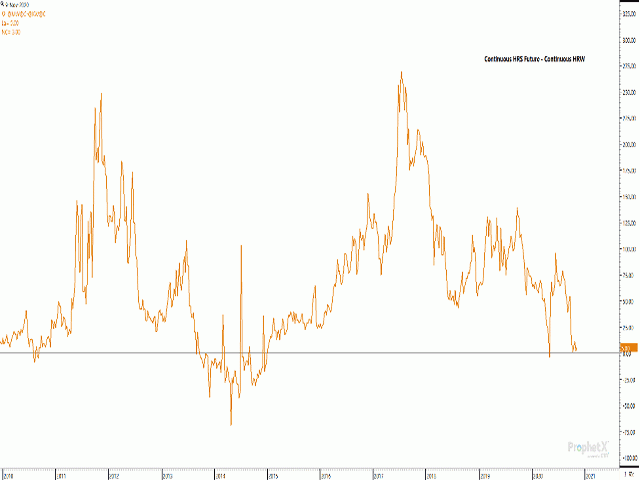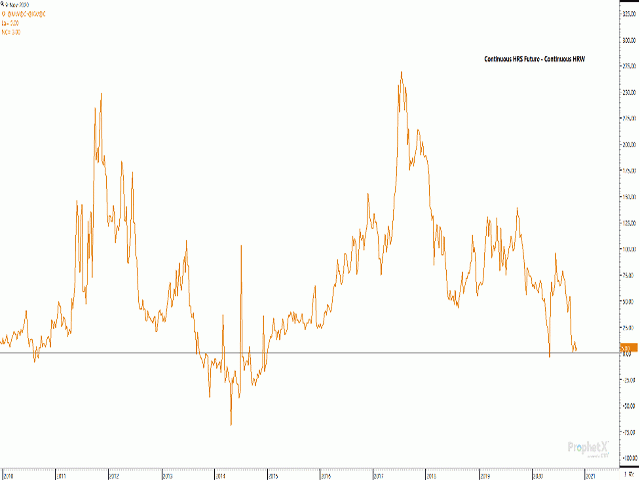Canada Markets
A Look at HRS/HRW Futures Spread
In today's Thursday Morning Basis Update, DTN Basis Analyst Mary Kennedy points out strength in cash markets for lower-protein hard red winter wheat.
"The milling premiums for lower proteins was stronger on the Kansas City spot market with 11.4% through 11.6% proteins up 15 cents and 11.8% up 3 cents. It is interesting to note that the flat price of 11.5% (PNW) and 13% (milling) protein is about 15-20 cents higher than 14% protein spring wheat. Overall, winter wheat remains too expensive for export business and eventually that could push the market lower."
DTN has long viewed the HRS/HRW spread (futures and cash prices) as a market signal or proxy for the demand for the higher protein spring wheat. As seen on the attached chart of the continuous spread between these two classes of wheat, we see that today's spread between the December contracts ended at just $0.05/bushel (bu), close to the weakest spread seen since January 2015.
P[L1] D[0x0] M[300x250] OOP[F] ADUNIT[] T[]
If we consider the Aug. 1-through-July 31 Canadian crop year, the 2019-20 average spread is calculated at $0.76/bu, while the five-year average is $0.97/bu (spring wheat trading over winter wheat), using ProphetX statistics calculation.
Looking at PDQinfo.ca data for the northern Alberta region, we see the cash bid for No. 1 13.5% hard red spring wheat at a premium of $16.85/metric ton over No.1 Canada Prairie Spring Red 11.5% protein wheat. This is roughly $1/mt higher than the 10-day average spread, while down from $24.01/mt reported this time last year and the five-year average of $50.77/mt.
A further distortion to this spread is the tight barley fundamentals and demand into the feed industry. Lethbridge wheat was bid at $265/mt by the Market Place broadcast, equal to the level traded for feed barley.
Despite the aggressive movement of wheat, with recently released Canadian Grains Commission data showing 477,000 mt of wheat exported in week 14 while cumulative exports are up over 1 million metric tons, or 24% from last year, protein does not seem to be the driver and these price signals bears watching during the balance of the crop year.
Cliff Jamieson can be reached at cliff.jamieson@dtn.com
Follow him on Twitter @Cliff Jamieson
(c) Copyright 2020 DTN, LLC. All rights reserved.








Comments
To comment, please Log In or Join our Community .